I made my first visit to Kennywood this weekend, and I took a ride on each of the six major Kennywood roller coasters.
Although it wasn’t easy, I decided to rank the historic amusement park’s roller coasters — separating the steel from the wood (comparing Phantom’s Revenge to Thunderbolt would be offensive to both). Unsurprisingly, the trio of 1920s-era wooden roller coasters are vastly different from the steel coasters, which all opened after 1990.
I purchased the park’s “VIP Coaster Tour” wristband, which allowed me front-of-the-line access at each of the park’s most popular coasters (only one time at each, though). It’s a wise $25 (at the time of this posting) investment, and it allowed me direct access to the front row of a couple of the coasters.
So let’s get started. How do Kennywood’s coasters rank against the others?
Steel Kennywood Roller Coasters Ranked:
1. Phantom’s Revenge
As a child, I was mesmerized by Steel Phantom’s transformation into Phantom’s Revenge, which occurred just as I was growing into my coaster fandom.
I gazed at photos of the before and the after. I was fascinated by the way it interacted not only with the park’s uneven terrain, but also the park’s other attractions.
So I’ll admit that I was somewhat starstruck as I stood in front of the iconic Phantom’s Revenge entrance sign — my eyes locked in a staring contest with the Phantom’s glowing green eyes.
The coaster’s 16-story lift hill stands tall above the Lost Kennywood section of the park. It towers over the long queue, situated in the intimidating structure’s shadows.
The ascent up the lift hill offers beautiful views of the Pittsburgh hills and the gritty industrial buildings that surround the park.
For a sweeping first drop, I was surprised by the amount of air I experienced in the rear car. The train wastes no time as it plummets toward the midway below.
The flat stretch of the track was unusual, but it gives riders a moment to acknowledge the train’s blistering speed.
I love terrain coasters — they require an immense amount of creativity from the designer, who does not have the luxury of a blank canvas. And not only did Kennywood’s terrain provide the coaster’s original designer, Arrow, a challenge, but the historic Thunderbolt wooden coaster also stood in the way.
So Arrow’s solution? Plunge the trains 225 (now 228) feet under Thunderbolt’s structure.
The drop into the ravine is incredible, but the Phantom isn’t finished — it has plenty of tricks left in its bag. And by tricks I mean lots of ejector air.
The remainder of the ride is unrelenting. Say goodbye to your seat.
The coaster’s spacious cars allow for plenty of legroom and “airtime room” as I like to call it. I felt every jolt of air, and thanked my seat belt multiple times throughout the ride. You’ll be thankful it’s there — but it didn’t take away from the ride experience. That in itself is a feat.
Phantom’s Revenge passes the “hair test” (as seen above). The airtime is unlike any pre-2000 steel coaster I’ve experienced in recent memory.
I had high expectations for Phantom’s Revenge, and it did not disappoint. I commend the great minds who brought this coaster to life — and those who no doubt extended its life by reviving it as Phantom’s Revenge.
2. Sky Rocket
While I expected great things from Phantom’s Revenge, I strapped into the front seat of Sky Rocket’s open-air train not knowing what was to come. I’m a fan of Premier’s “legacy” and new launch coasters — like the older Mr. Freeze at Six Flags St. Louis as well as the newer Backlot Stunt Coaster clones.
The 2-car, 12-seat train rolled slowly out of the station, gaining just a bit of momentum as it approached the launch.
I was surprised by the lack of a pause on the launch track, but why waste any time? The 0-50 mph launch in three seconds wasn’t the most intense acceleration I’ve ever experienced, but the sustained speed as the train “rocketed” toward the tophat was exhilarating.
This was my first non-twisting top hat element, and I really enjoyed it. The pop of air as the train crested the hill was slowed slightly by trim brakes, but I liked the pause — especially in the front seat. Another great view.
The cutback inversion provided an unexpected force — I wish this element was used more often.
The zero-G roll was a forceful followup to the cutback. The pacing throughout the first half of the ride is impressive.
The mid-course brakes offer a slight reprieve, but the near-vertical drop that follows was more intense than I was anticipating, especially if seated toward the back of the train. It reminded me of the first vertical plunge on Mystery Mine at Dollywood.
The corkscrew wasn’t as forceful as the zero-G roll, providing instead a brief moment of hang time.
The final stretch of the coaster is relatively mild, but the final bunny hills provided a couple pops of air.
I was very impressed by how smooth it was. The restraints were somewhat uncomfortable, mostly due to the bulky, padded leg restraints.
Sky Rocket was definitely the sleeper hit of the trip. It’s intense, but nowhere near as intense as Phantom’s Revenge.
Sky Rocket may not be better than Phantom’s Revenge, but it sure comes close in my books.
3. Exterminator
Disclaimer: I hate spinning. Like, really hate it. But my VIP Coaster Tour included a skip-the-line pass for Exterminator. And as long as the line for Exterminator was, I felt that I was throwing away money by not using it.
Though I didn’t enjoy the spinning, I will say that I enjoyed everything else about the coaster. The hairpin turns and sudden dips were predictable but more enjoyable in the rounded car than in the standard two-by-two wild mouse car. The spinning wasn’t terrible — definitely tamer than some of the similar models I’ve ridden at traveling fairs.
The theming was campy and aligned with Kennywood’s classic amusement park vibe.
I was glad that I rode it (for the credit if for nothing else), but I likely wouldn’t ride it again. Especially not with the long line it kept throughout the day.
Honorable Mention/Didn’t Ride: Lil’ Phantom
My goal was to ride all of the Kennywood roller coasters, but unfortunately I didn’t have enough time to wait for Lil’ Phantom.
Next time!
Wooden Kennywood Roller Coasters Ranked:
1. Thunderbolt
Thunderbolt, Thunderbolt. Where do I begin? I remember staring at pictures of it in one of the first roller coaster books I bought. I was enthralled by its swooping drop, its bright white and red color scheme, its old-school trains with headlights.
And unlike the park’s other two roller coasters, half of the coaster’s layout stands tall over the midway, offering ample photo opportunities.
You can *feel* the history on this ride. pic.twitter.com/zvSxTpC8ZK
— Coaster101.com (@Coaster101) June 24, 2017
(Side note: don’t miss the Thunderbolt mural, not far from the coaster’s entrance.)
Tip: make sure you ride with someone who you don’t mind bumping into. The seats have no dividers, so with each turn you will be pressed against your riding partner (and you must have one — no single riders allowed).
Besides the ride experience itself, one of my favorite things about Thunderbolt is its use of the terrain and its interaction with Phantom’s Revenge. It only makes sense that the park’s two best coasters are so close.
Thunderbolt is rough, but you can feel the history with every bump and jolt — at least that’s what I told myself.
2. Jack Rabbit
Jack Rabbit is Kennywood’s oldest coaster, opening in 1920. So it’s three years away from its 100th anniversary. With Lakemont’s Leap-the-Dips coaster currently not operating, it’s tied with Jack Rabbit at Seabreeze for the title of oldest operating coaster in the U.S.
But it’s not showing its age.
The coaster’s unique layout in a ravine is mostly hidden from the public’s view.
Like Thunderbolt, Jack Rabbit’s first order of business following the turn out of the station isn’t a lift hill but a drop into a ravine.
The lift hill comes halfway through the ride. Its 40-foot-tall turnaround is unassuming, but provides a nice view of the park’s lagoon.
But the crowning moment of Jack Rabbit is the coaster’s legendary double-down element, which occurs following the turnaround above the lagoon.
The two consecutive drops provide a delicious double-scoop of airtime. Again, it’s nearly impossible to photograph, but that almost makes it even more special. It’s something you have to ride to see.
The train speeds into the station, marking a thrilling end to a relatively short ride.
I’m so glad Jack Rabbit has been kept alive and well maintained all these years. I hope Kennywood has big plans to celebrate its upcoming centennial.
3. Racer
Not far from Jack Rabbit stands Racer, the 1927 racing wooden coaster — the newest wooden coaster at Kennywood.
Racer’s two lift hills stand 72 feet tall. The first drop of 50 feet is tame, but the main attraction with this coaster is the racing component.
The coaster’s entrance alone is an icon. The queue in front can get a bit toasty on a hot day, but it moves quickly thanks to the double-train operation.
Ready for some racing! pic.twitter.com/xFBvfE1oM7
— Coaster101.com (@Coaster101) June 24, 2017
One of my favorite things about these classic racing wooden coasters is the camaraderie and friendly rivalry that forms between the two trains.
With each turn, the trains swap the title of leading train. Opposing riders high five one another as they pass by on the turnarounds. The coaster’s camelback hills provide a few pops of airtime, especially if you’re seated in the back car of the train.
I rode both sides of Racer (and, yes, I counted each track as a separate credit).
Ranking Kennywood’s three wooden coasters was not easy. For three coasters that all opened in the 1920s, Kennywood has taken incredible care of each.
If you’ve visited Kennywood, how do you rank the park’s coasters? What do you think of my ranking? Share your thoughts in the comments section below!

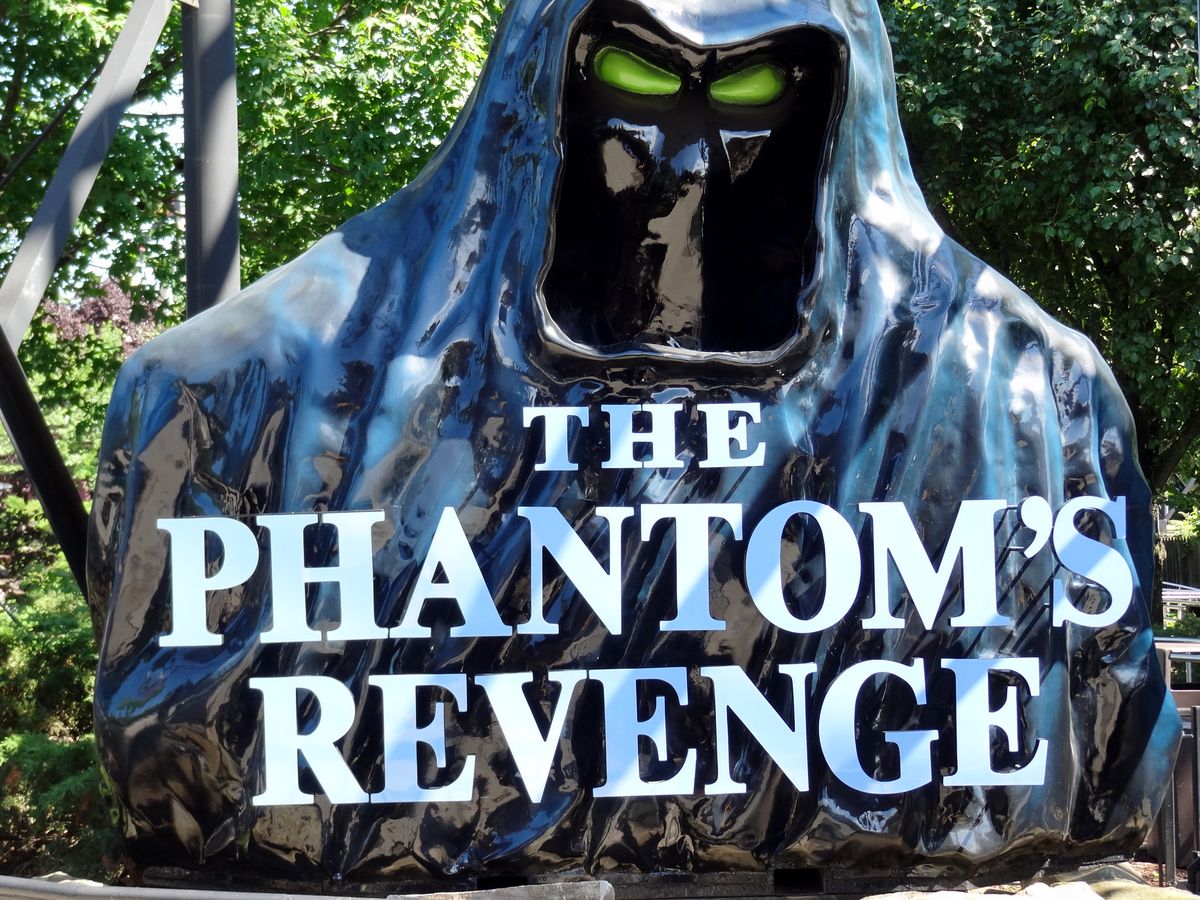
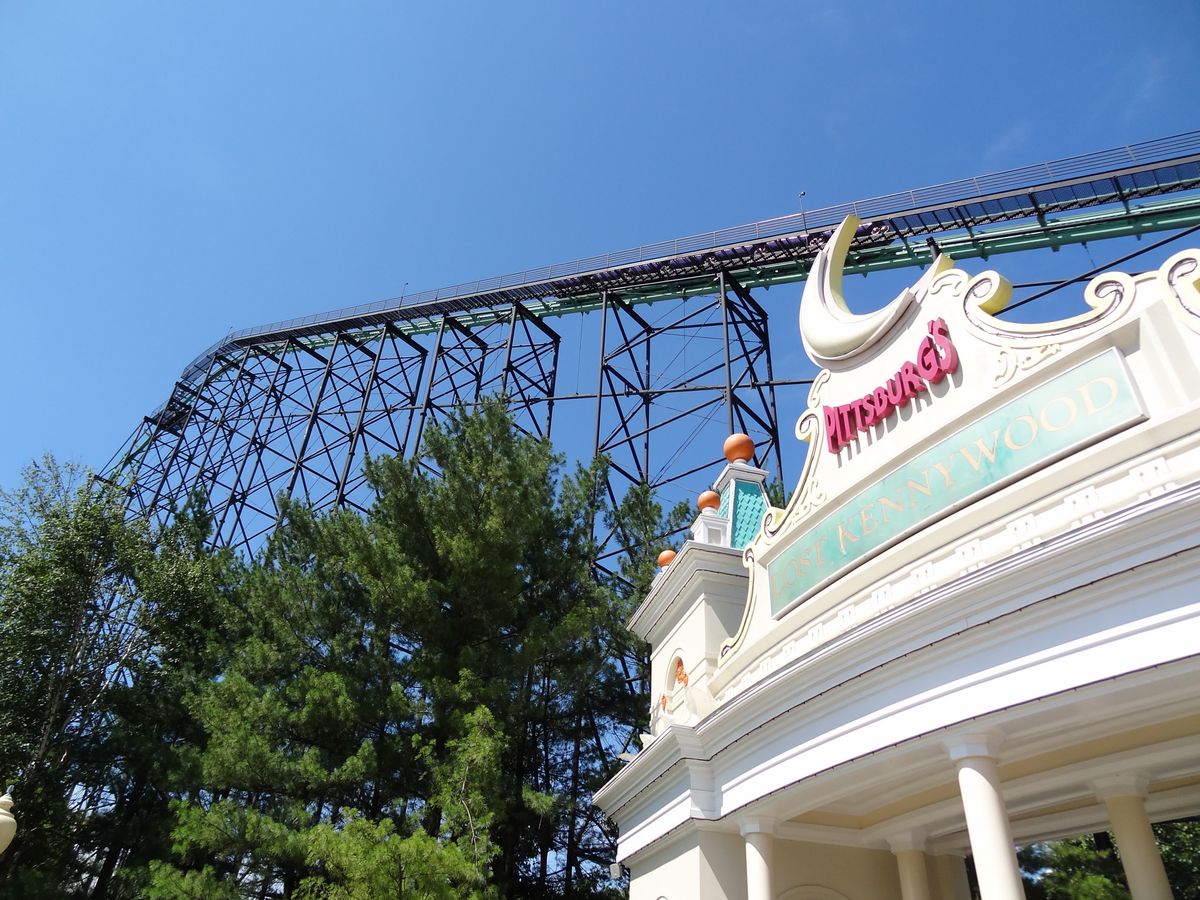

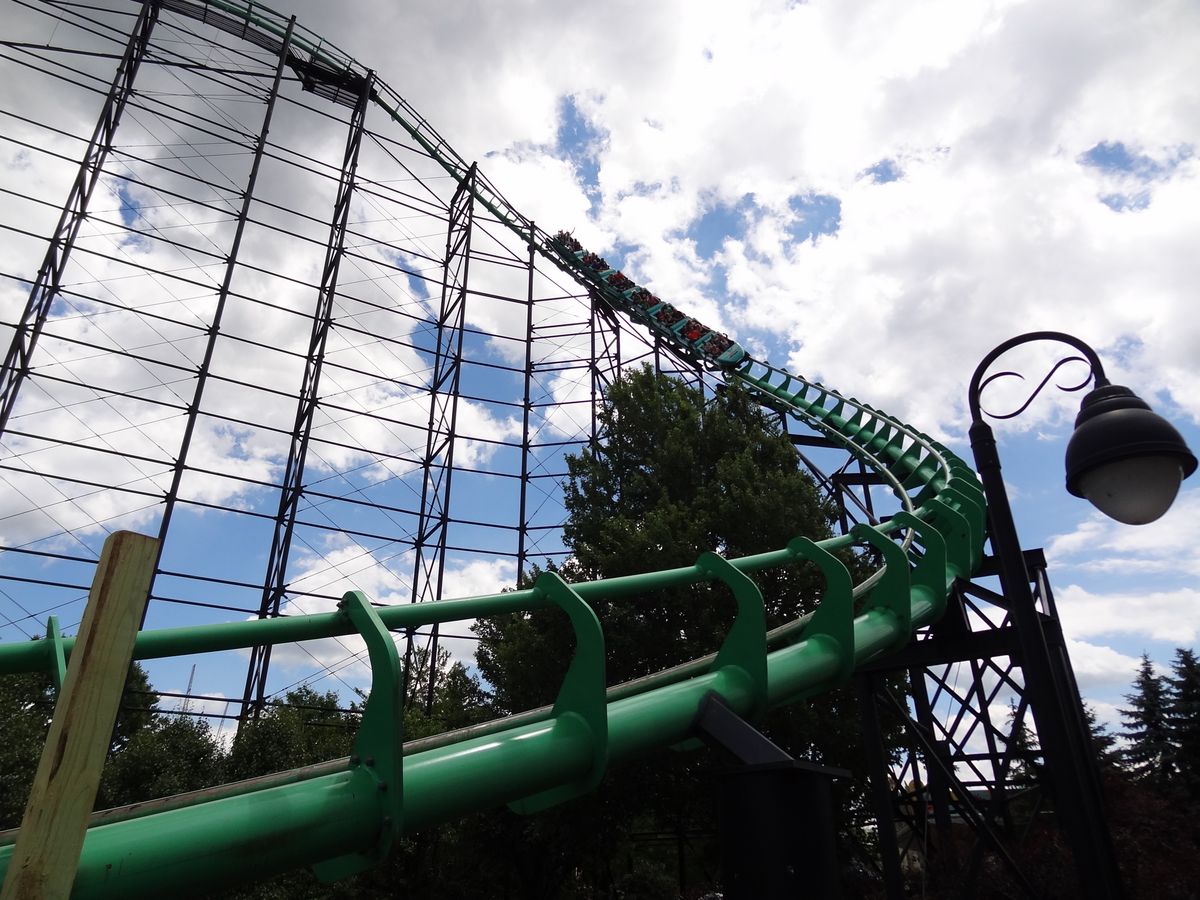
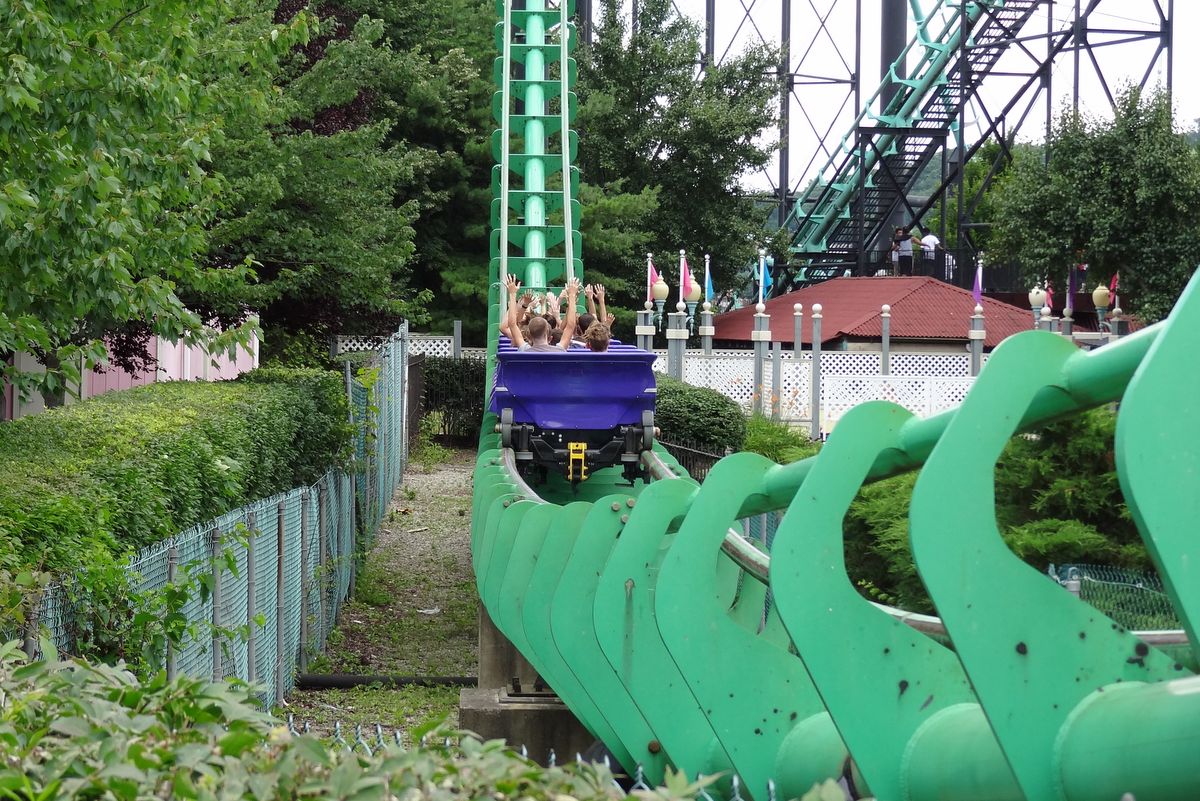
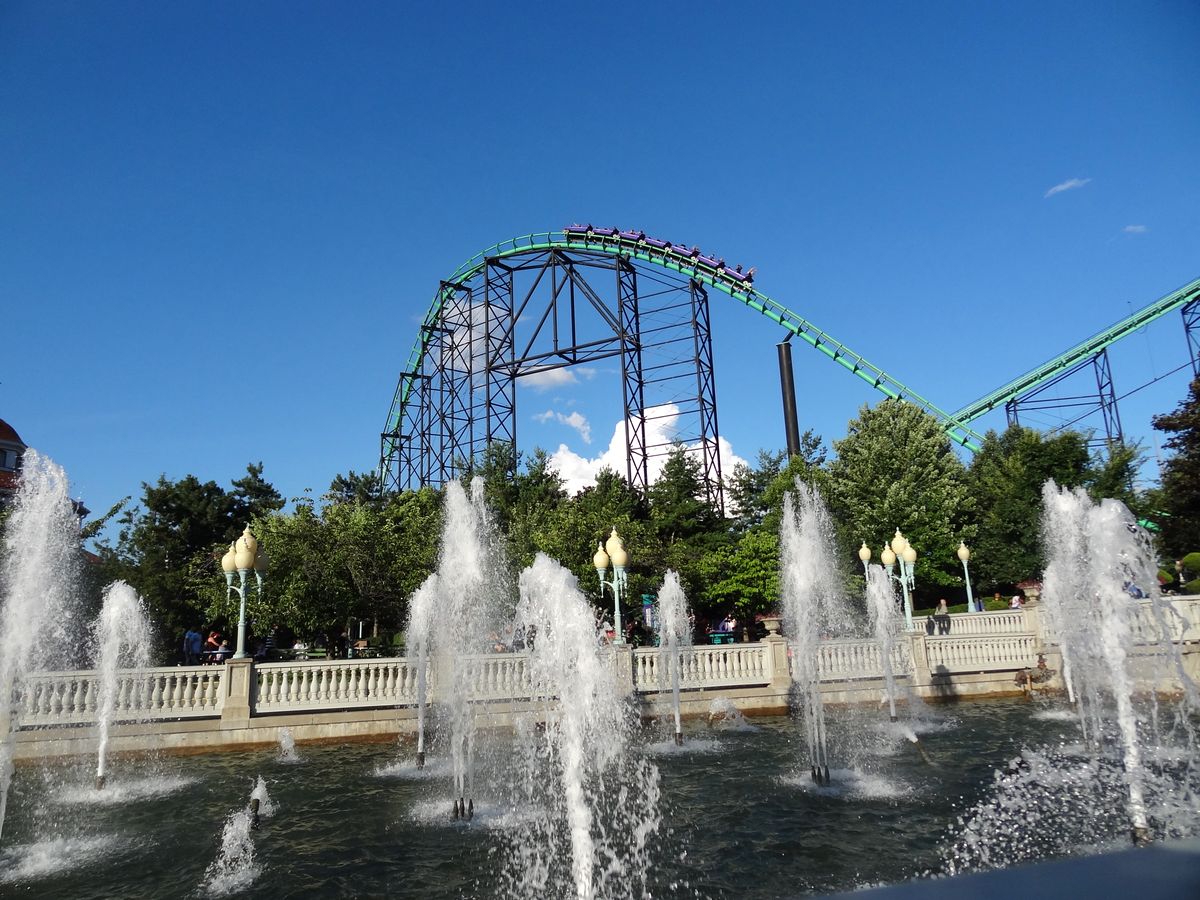
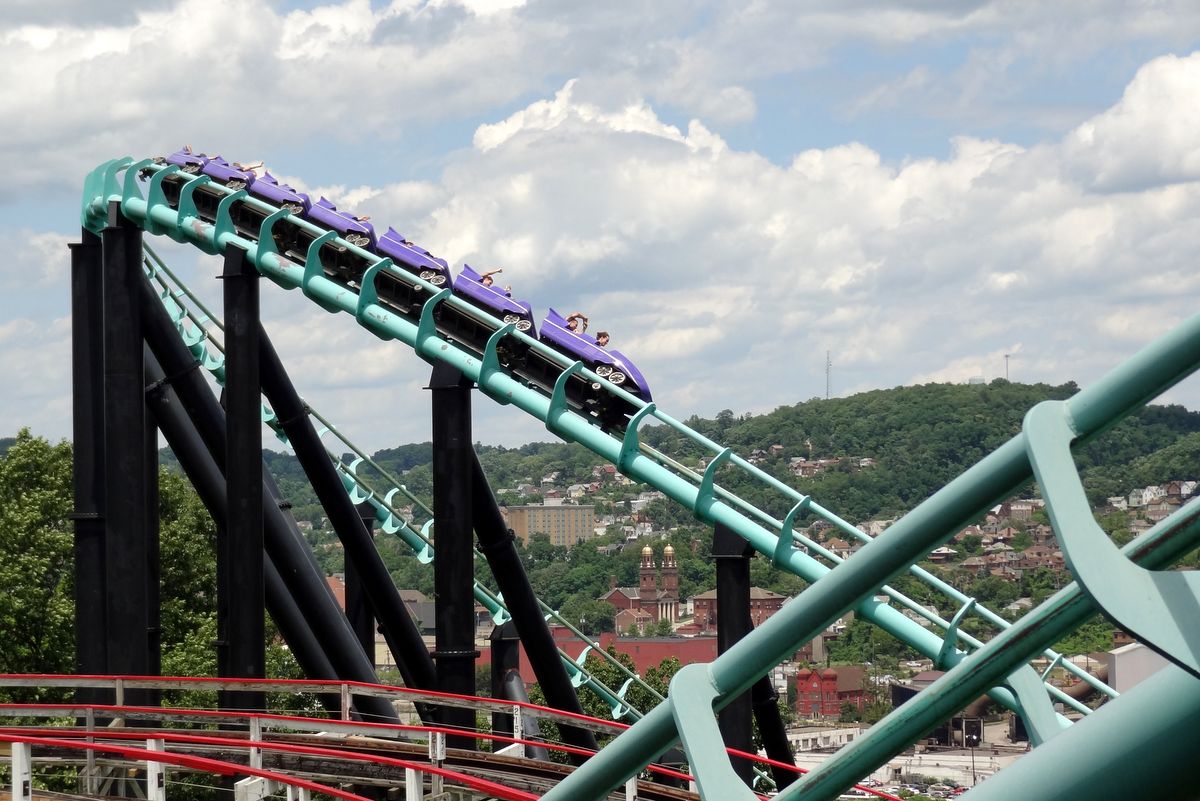
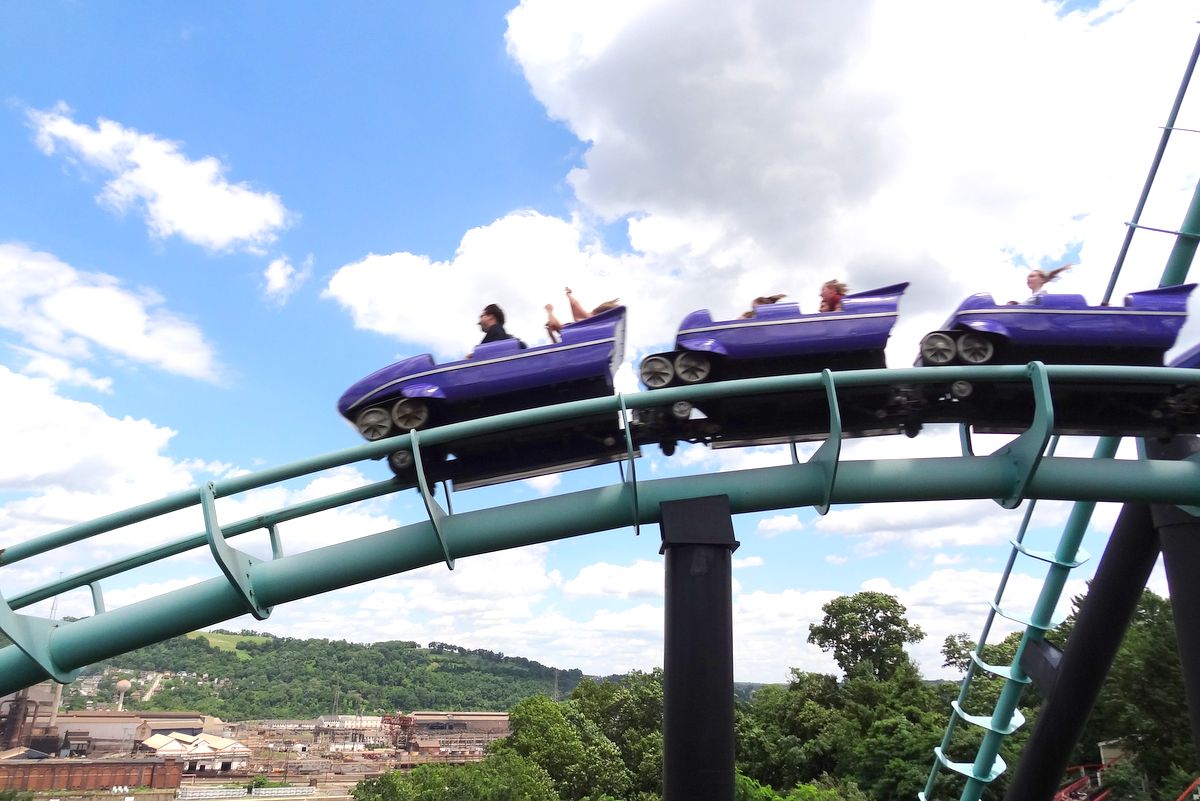
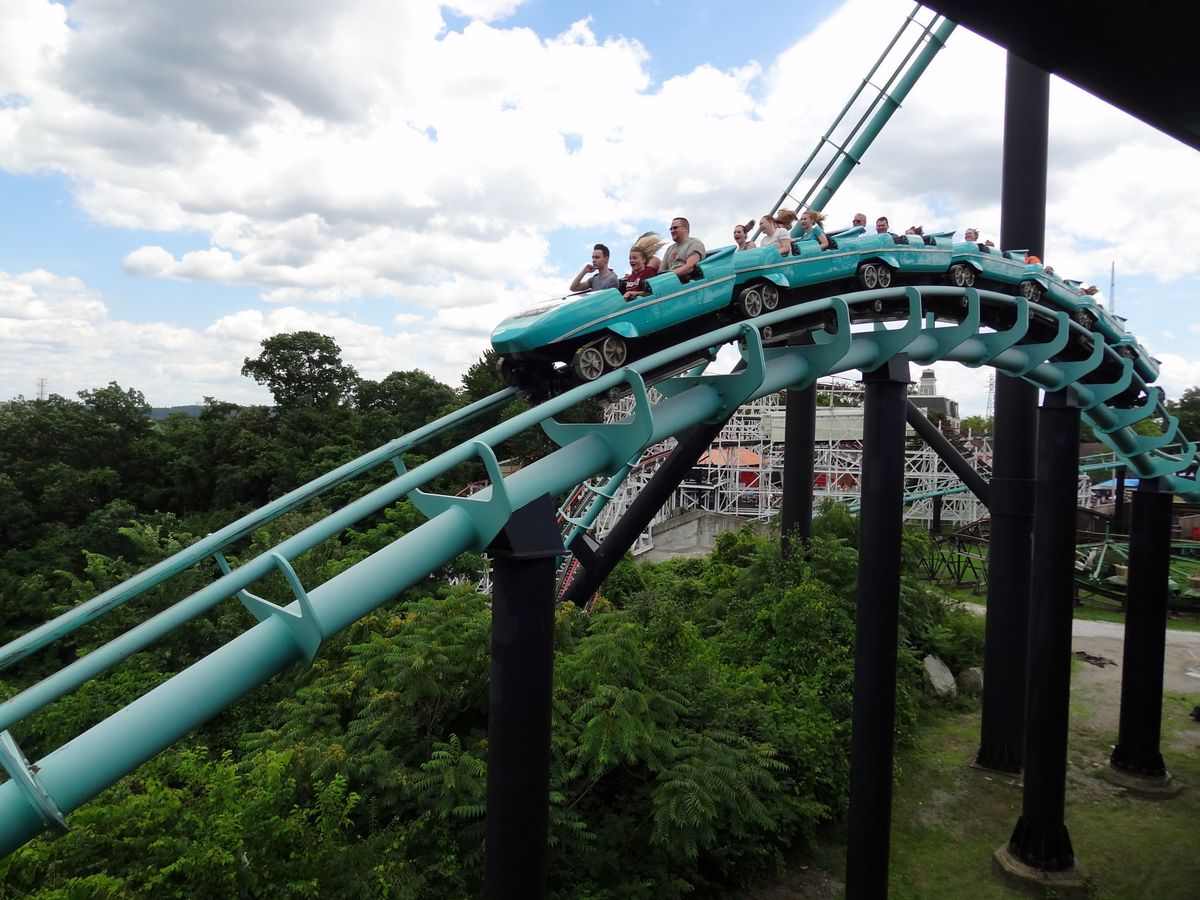
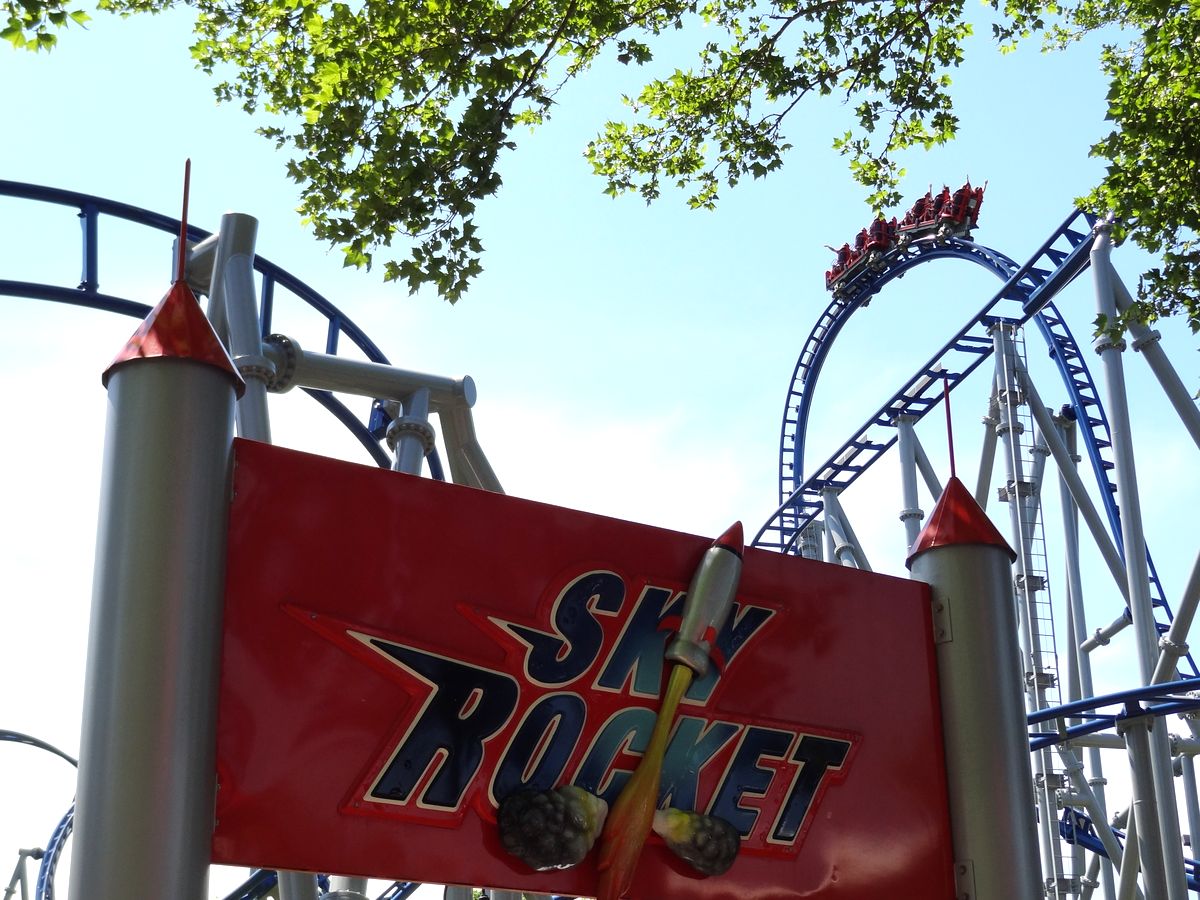
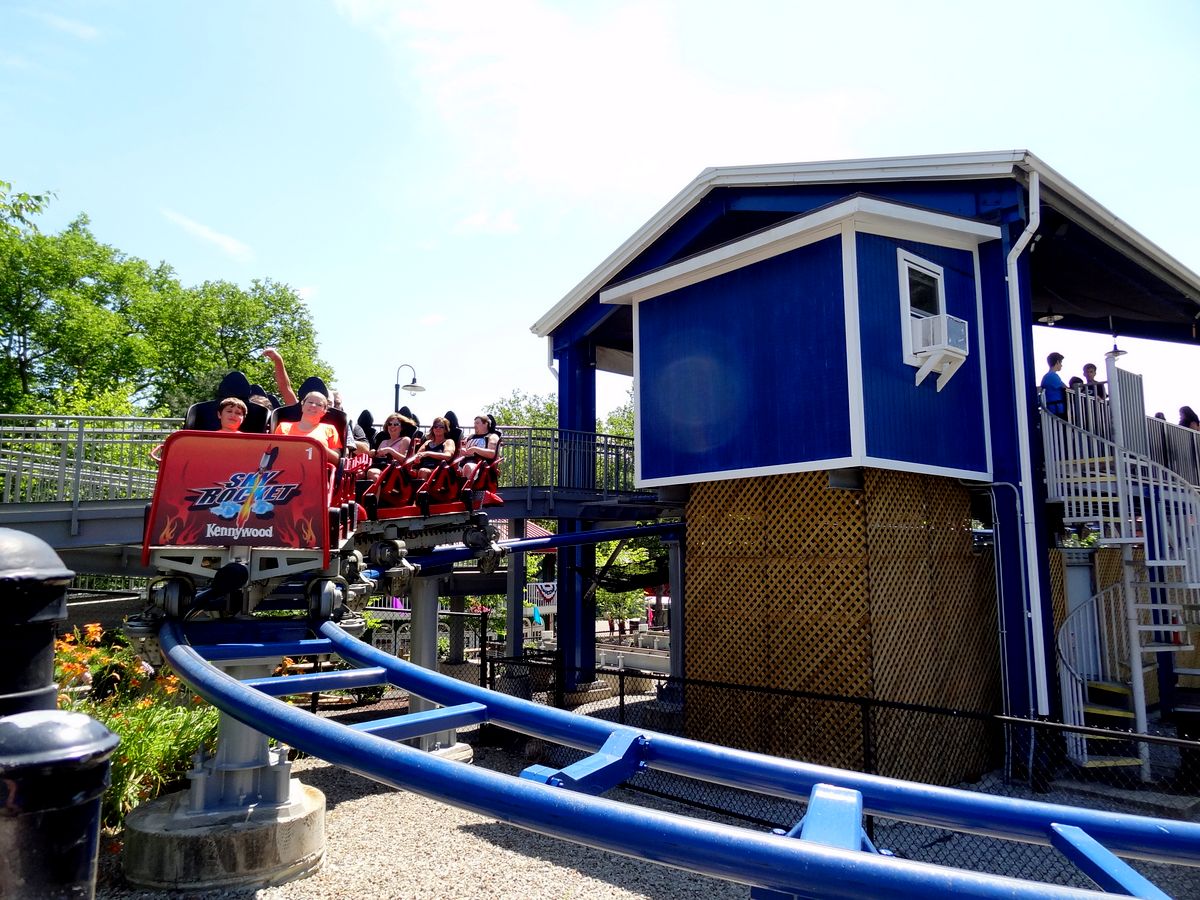
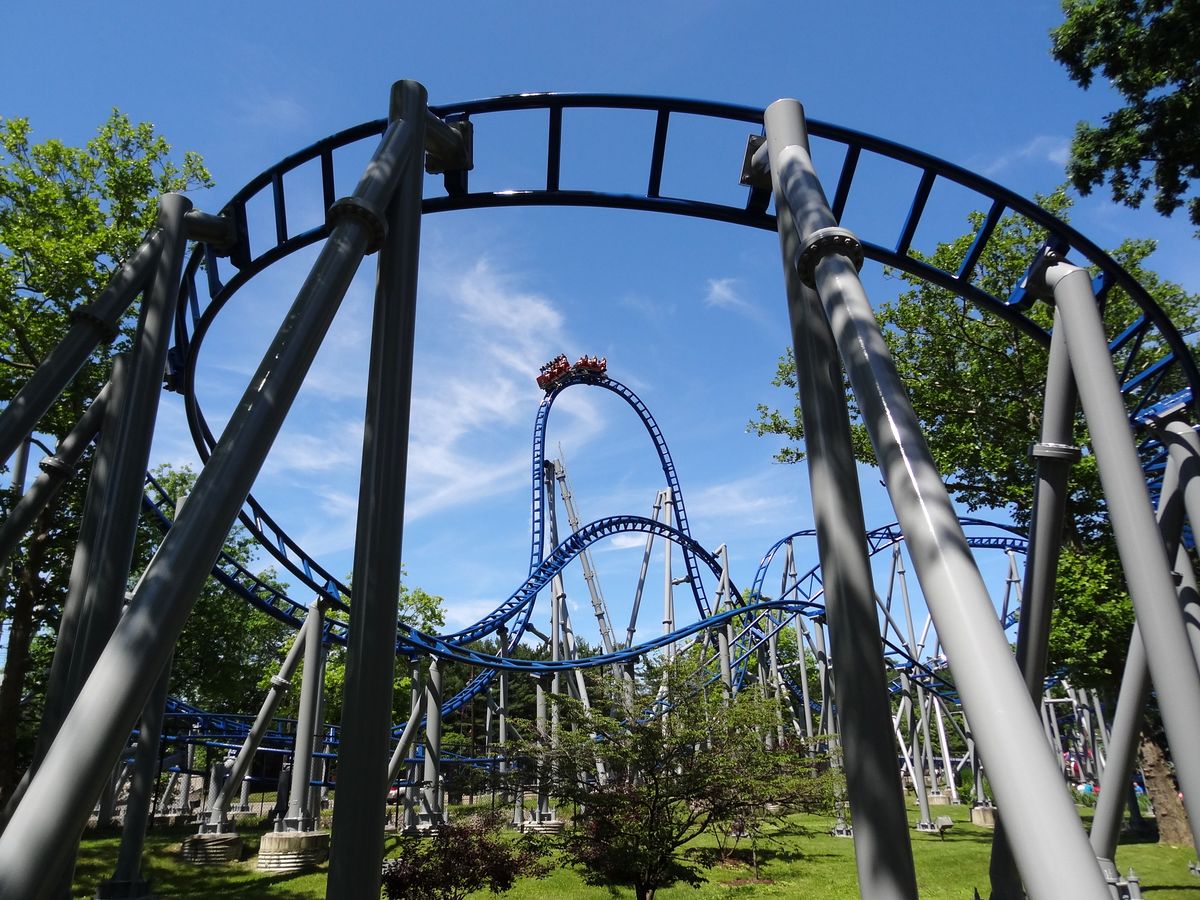
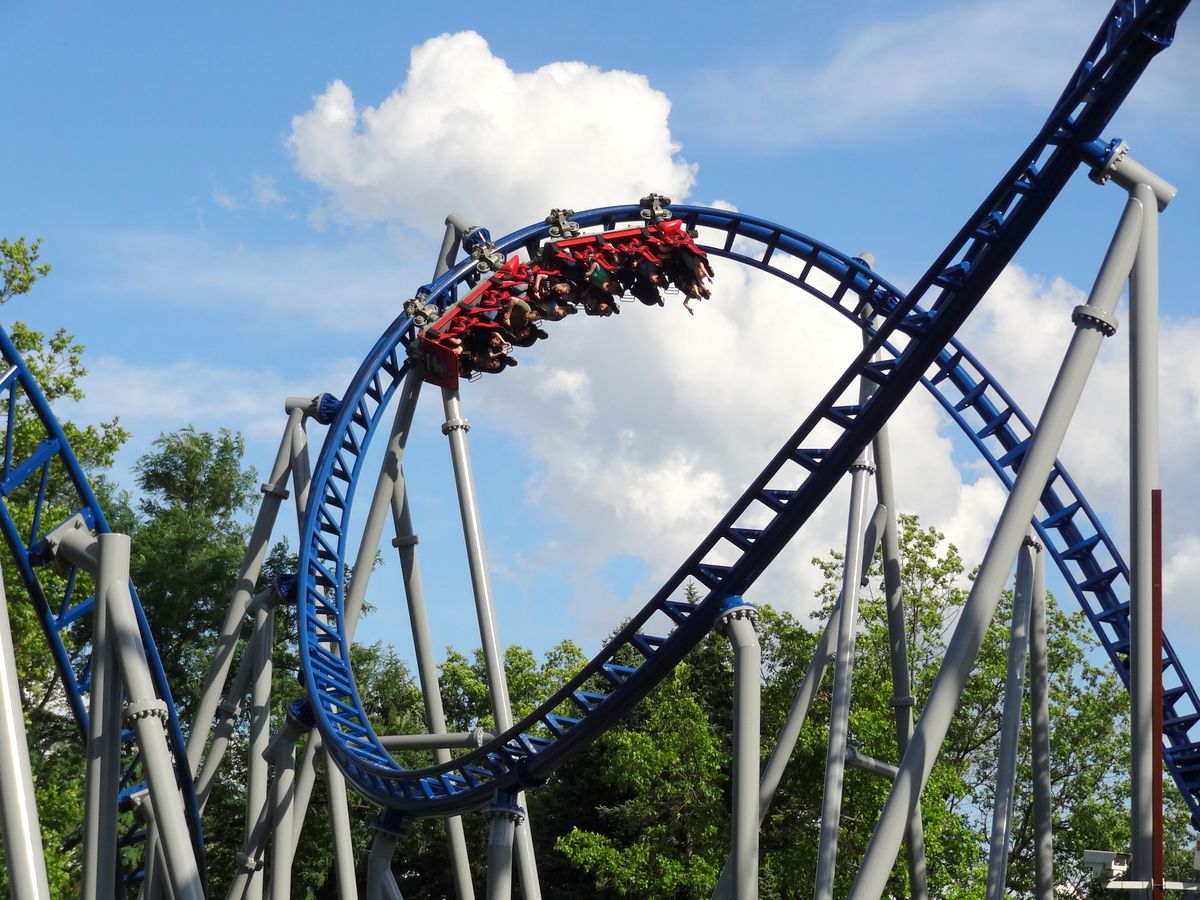
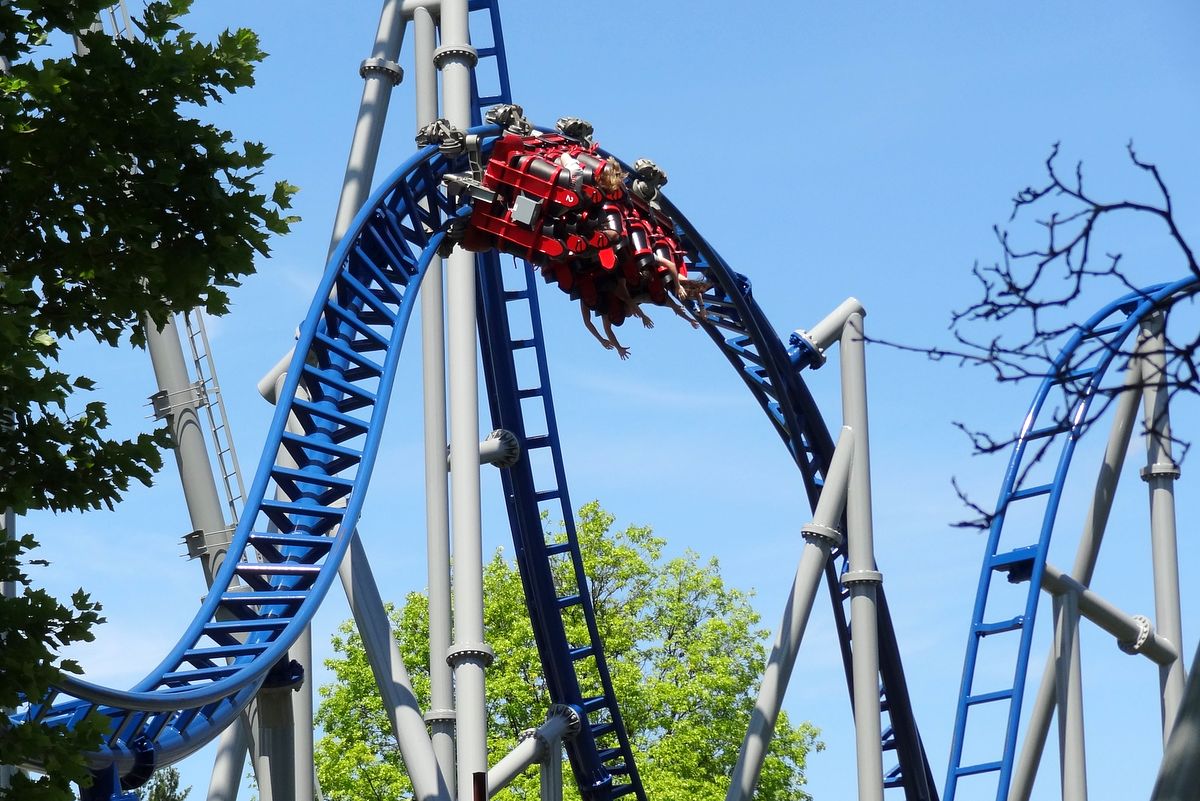
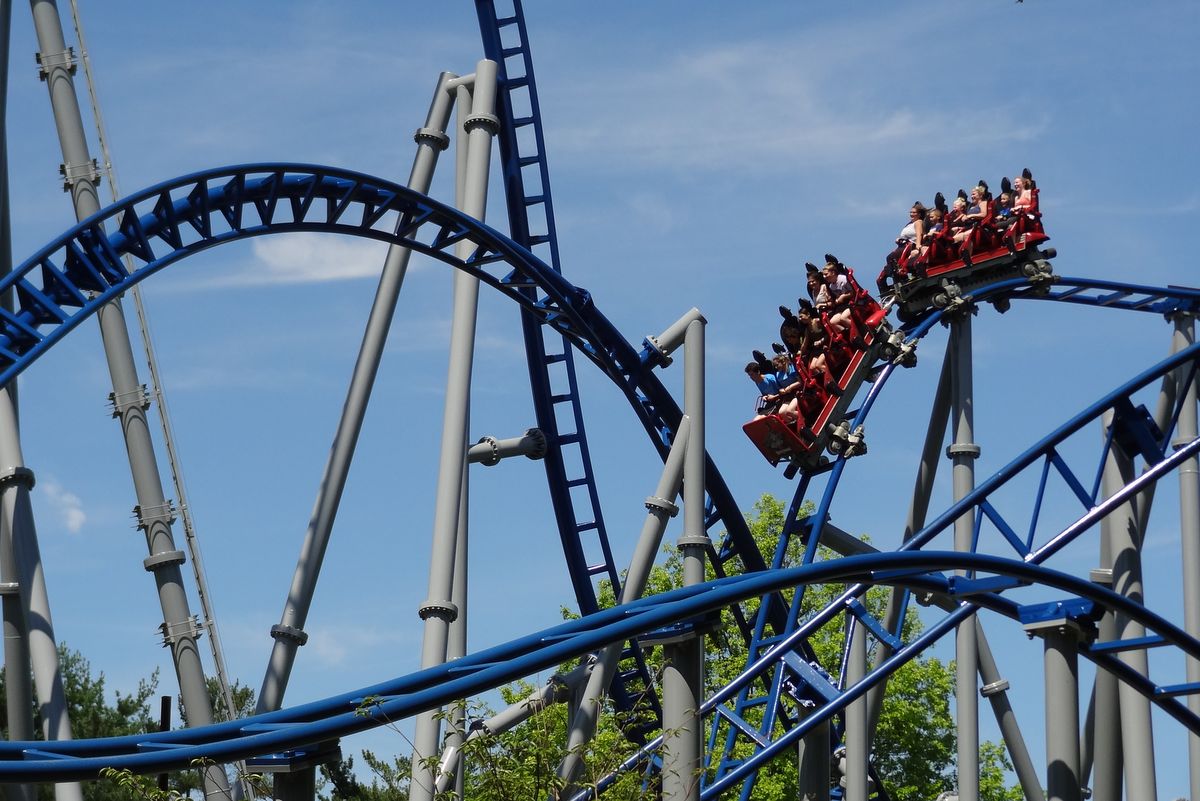
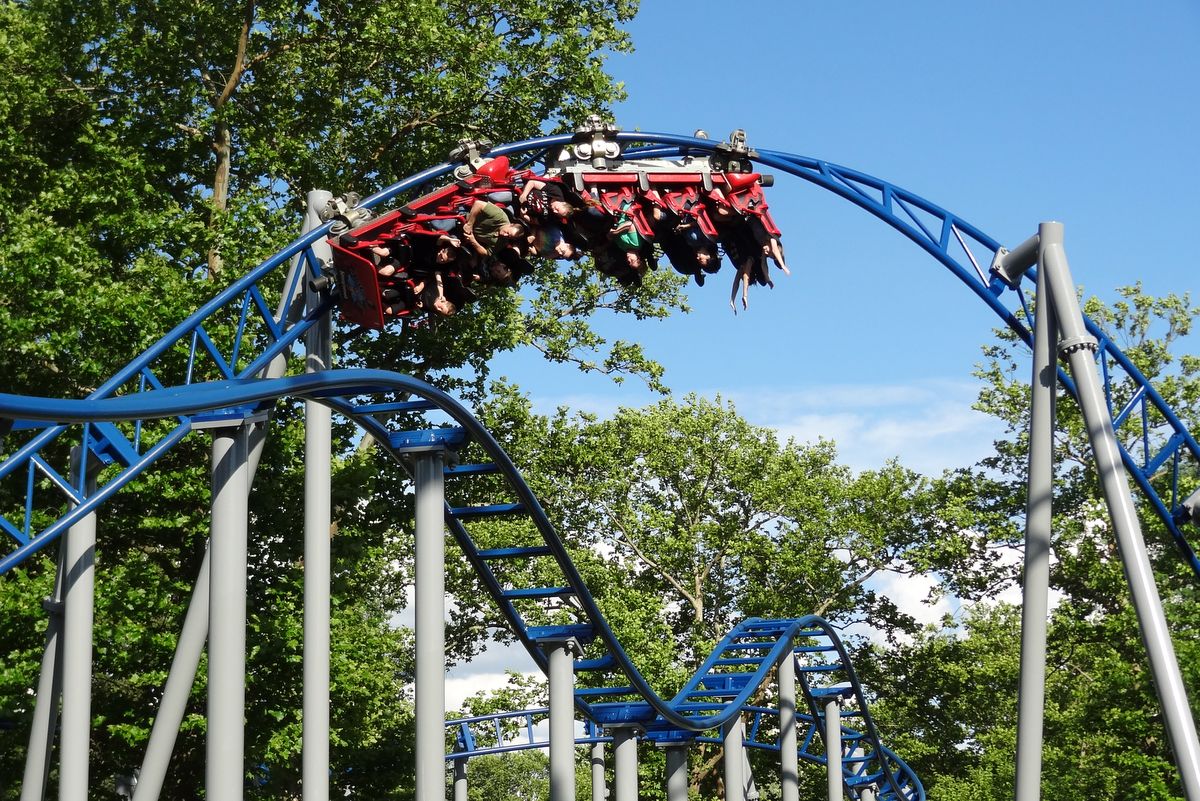
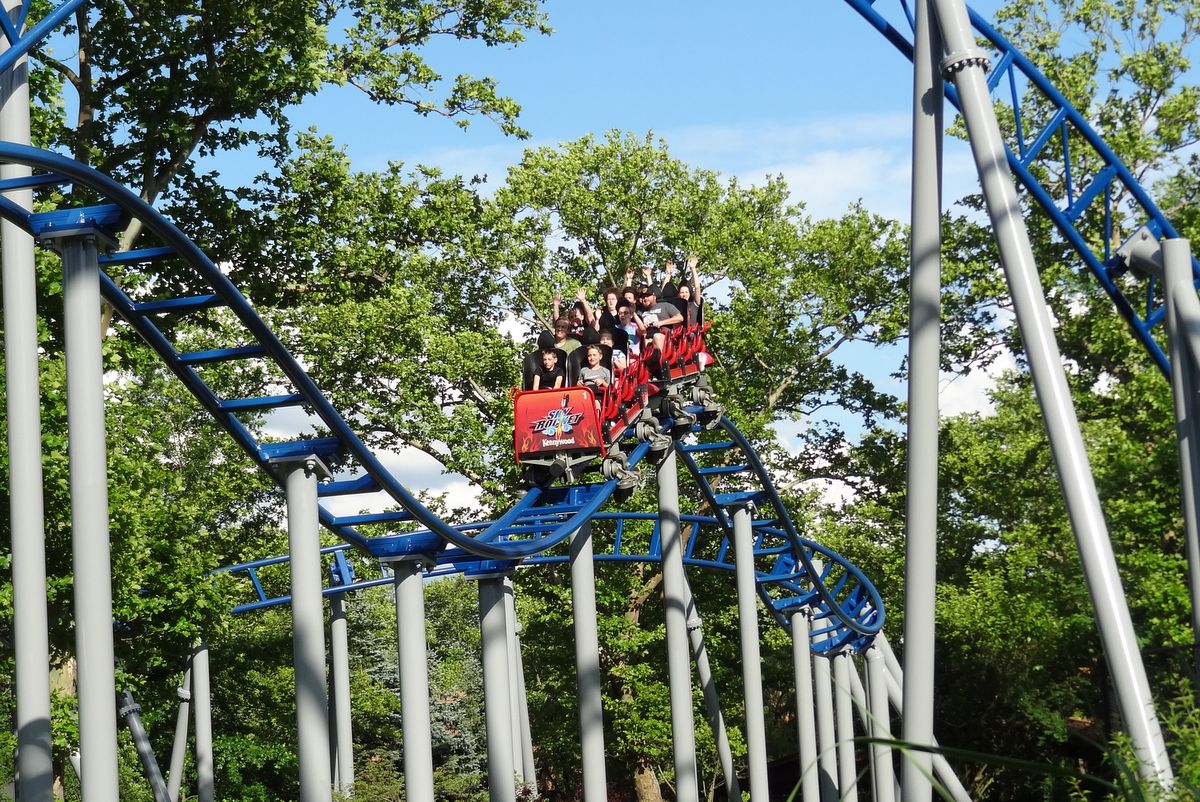
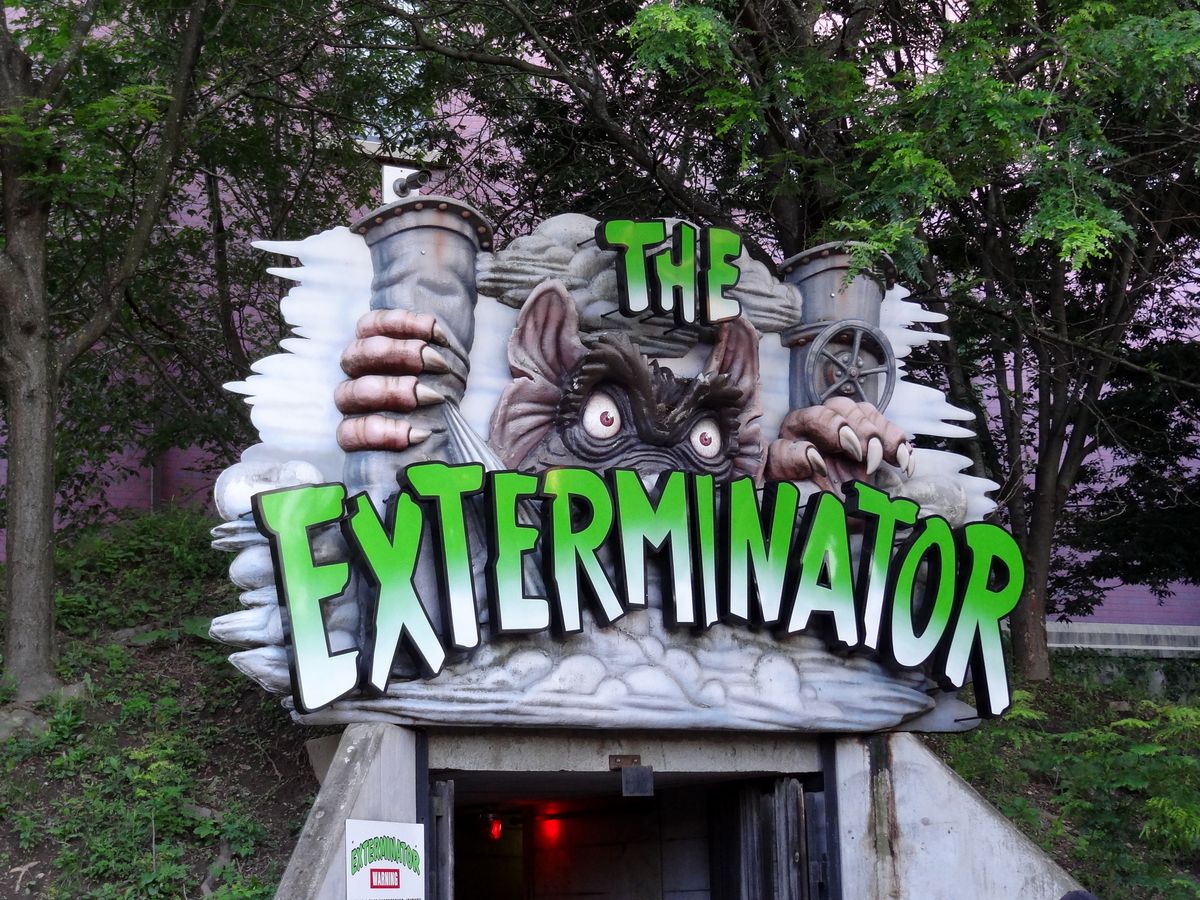
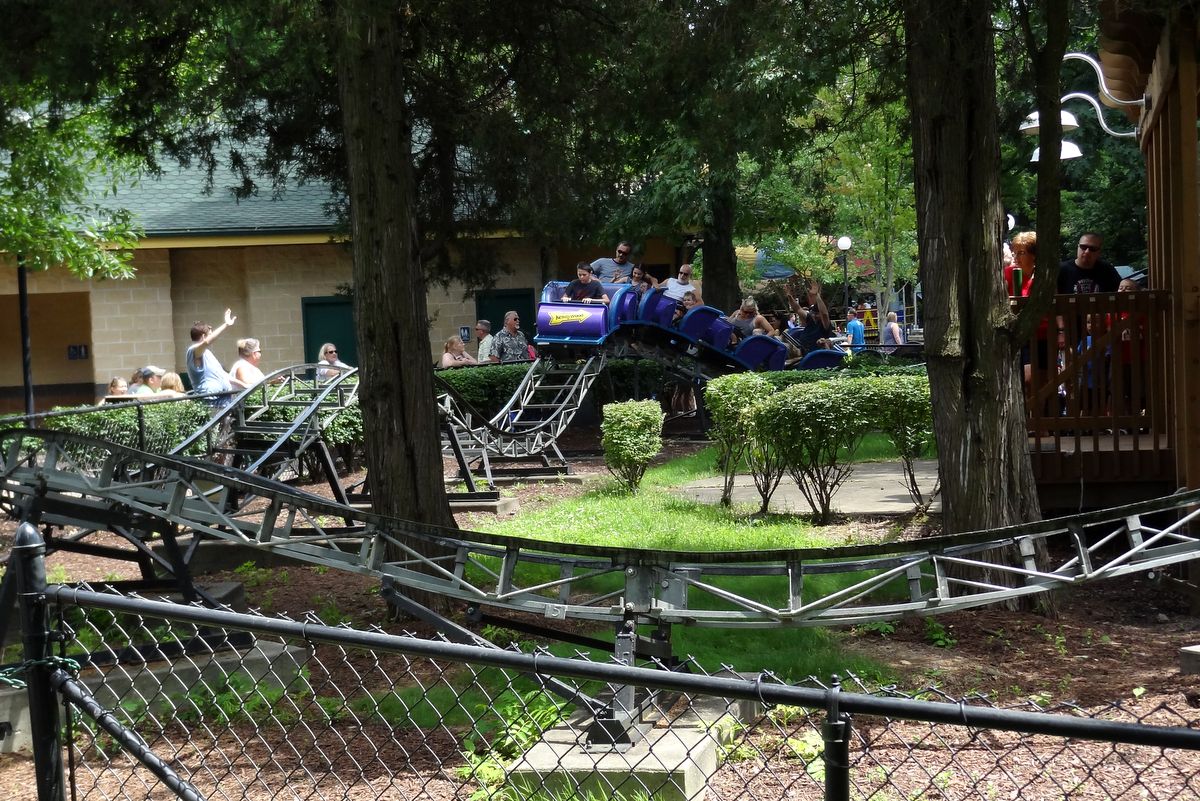
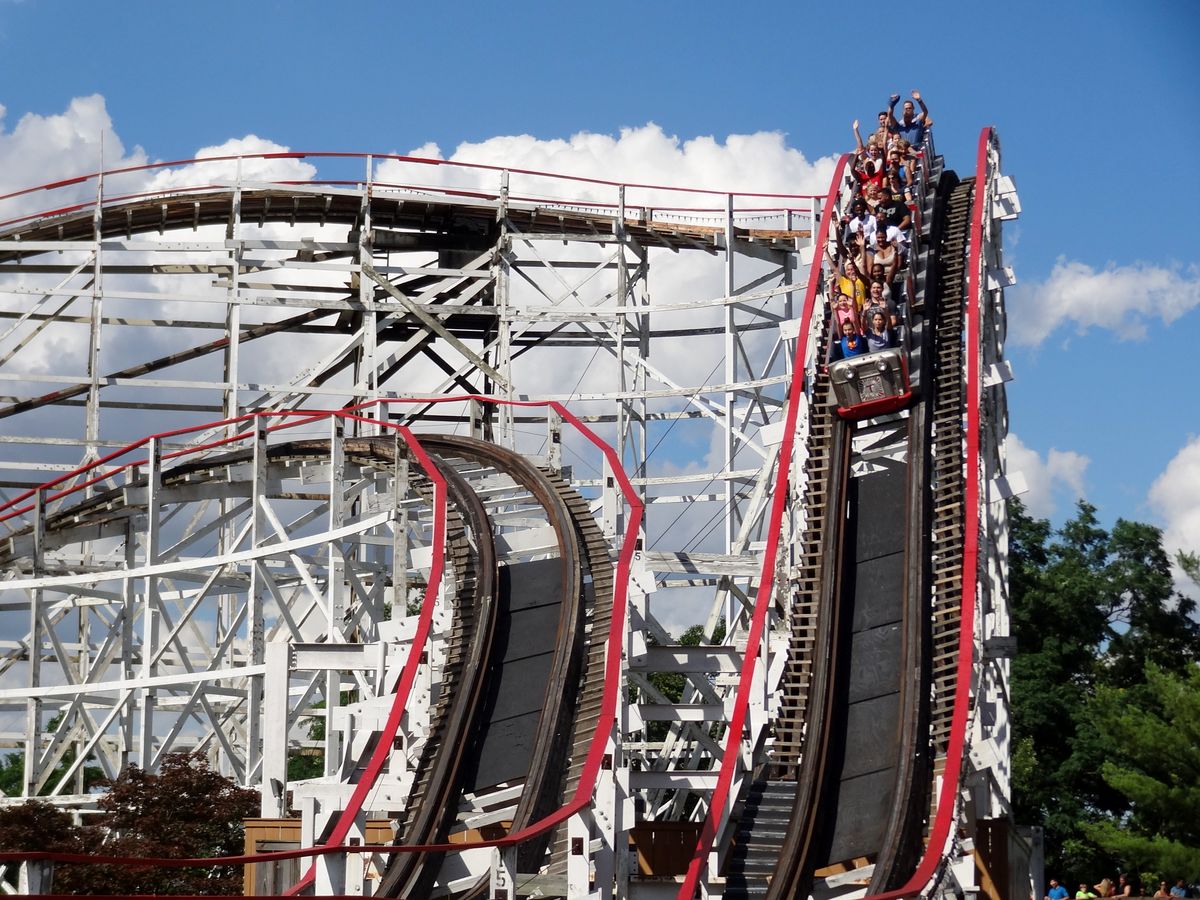
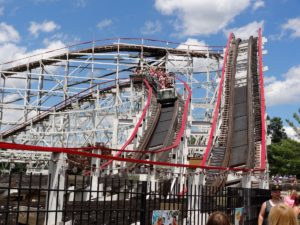
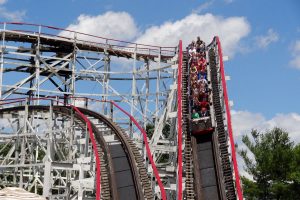
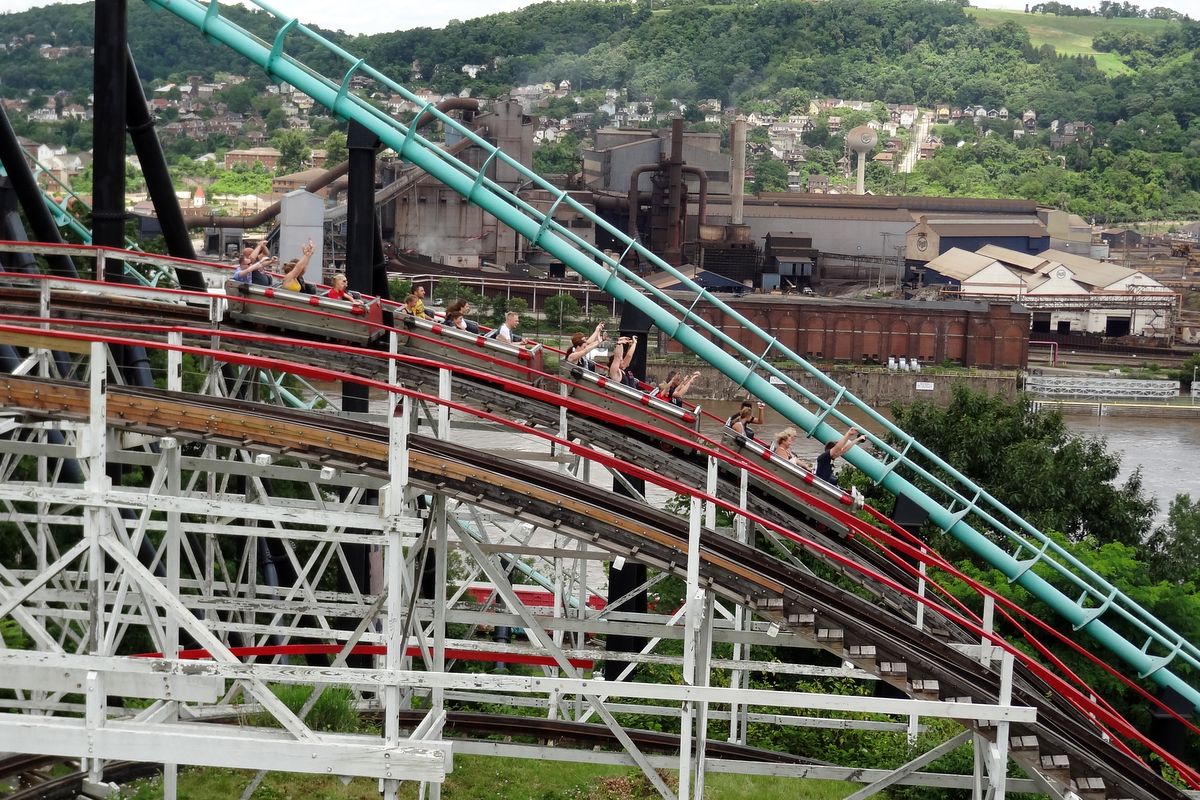

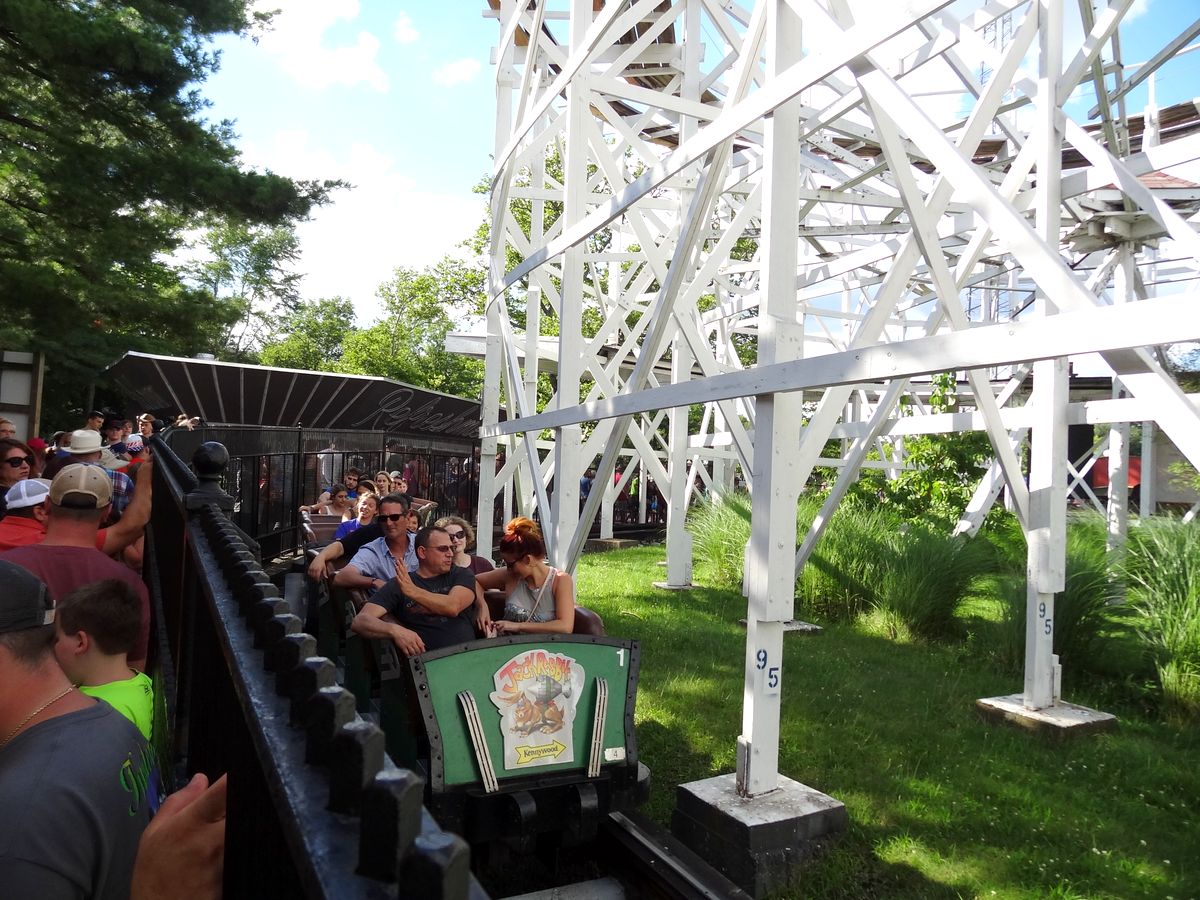
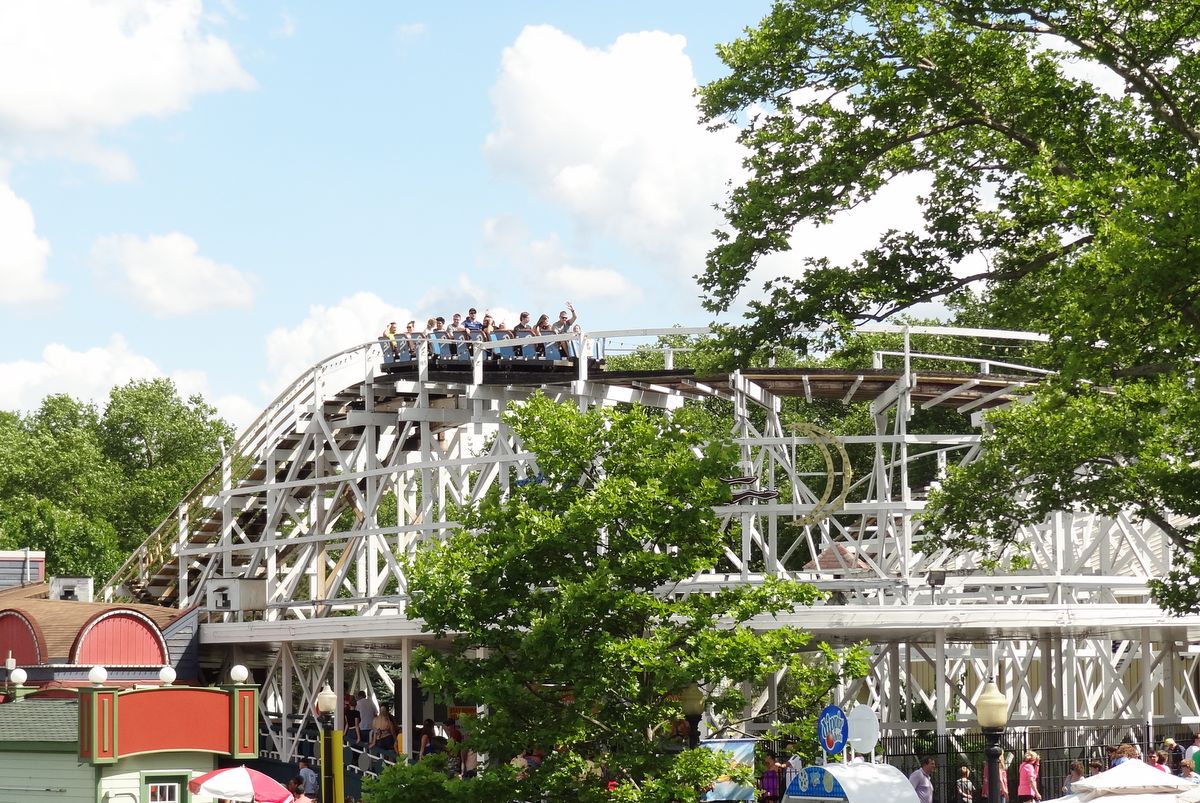
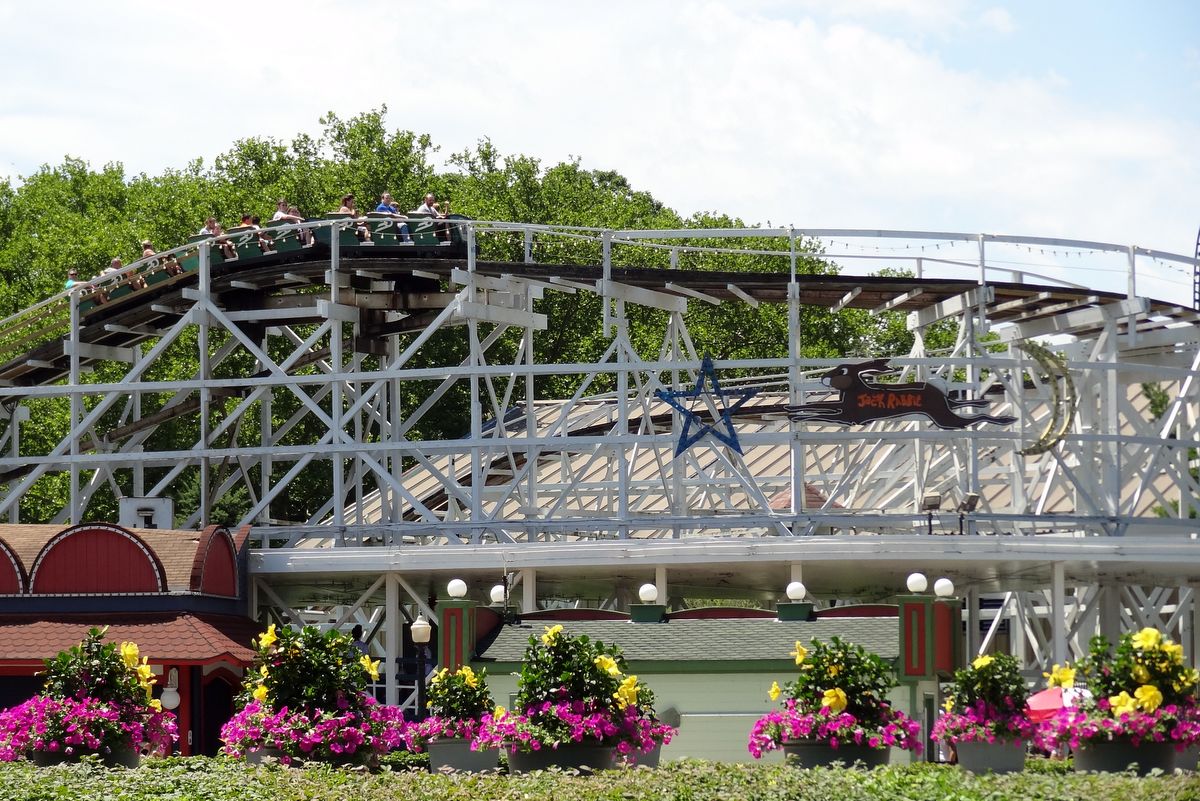
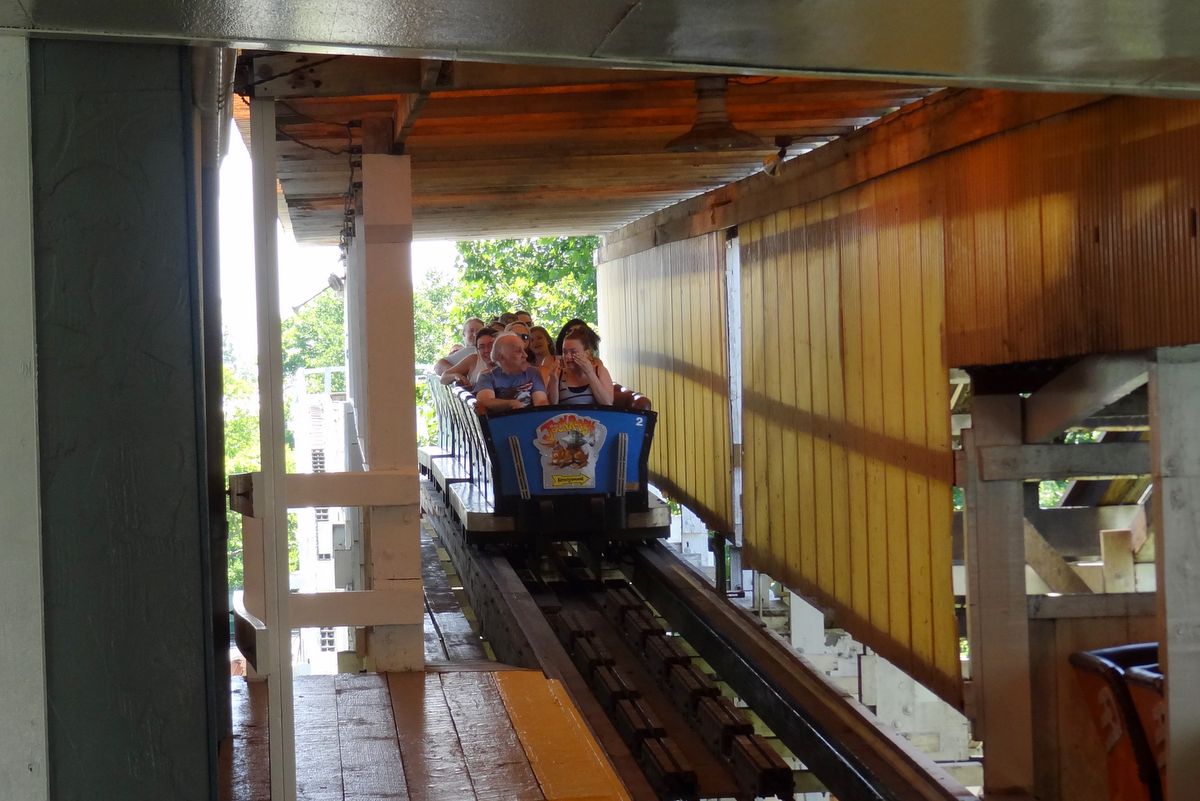

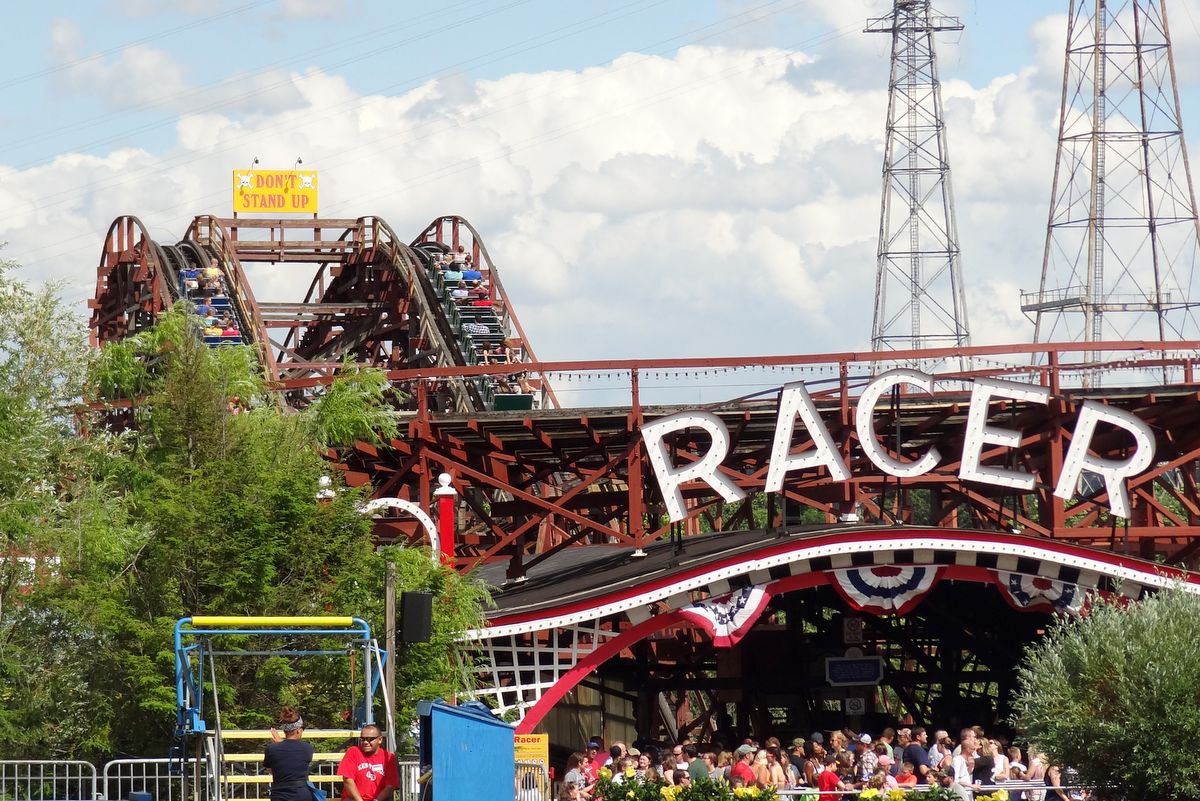
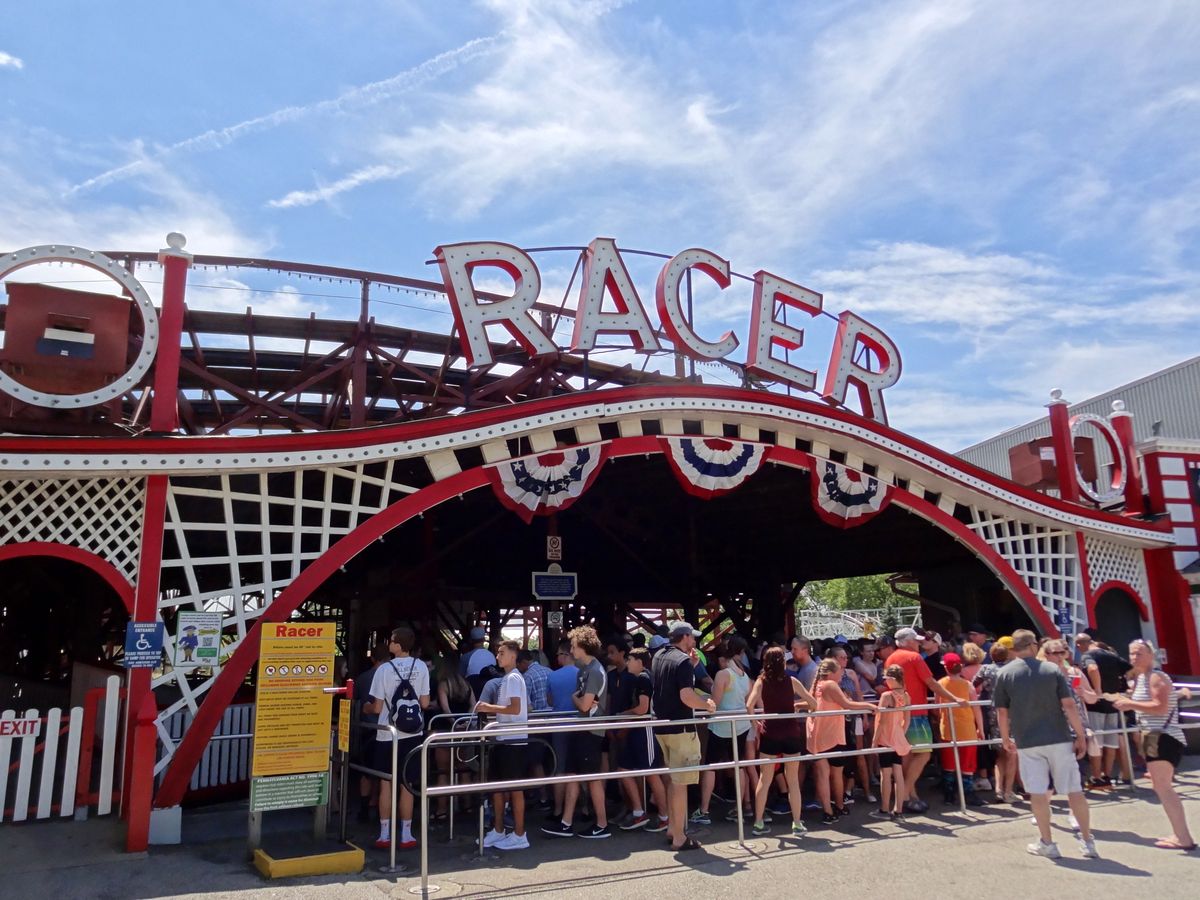
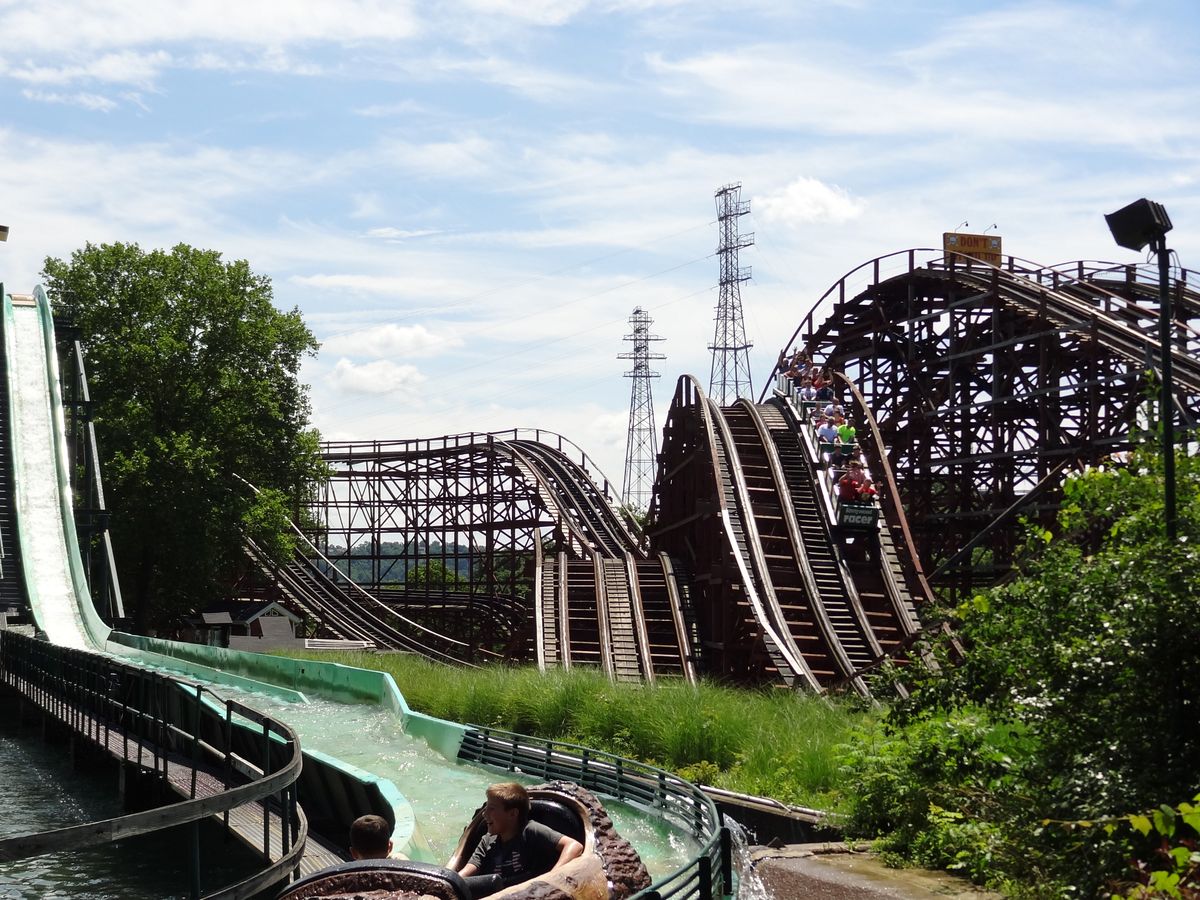
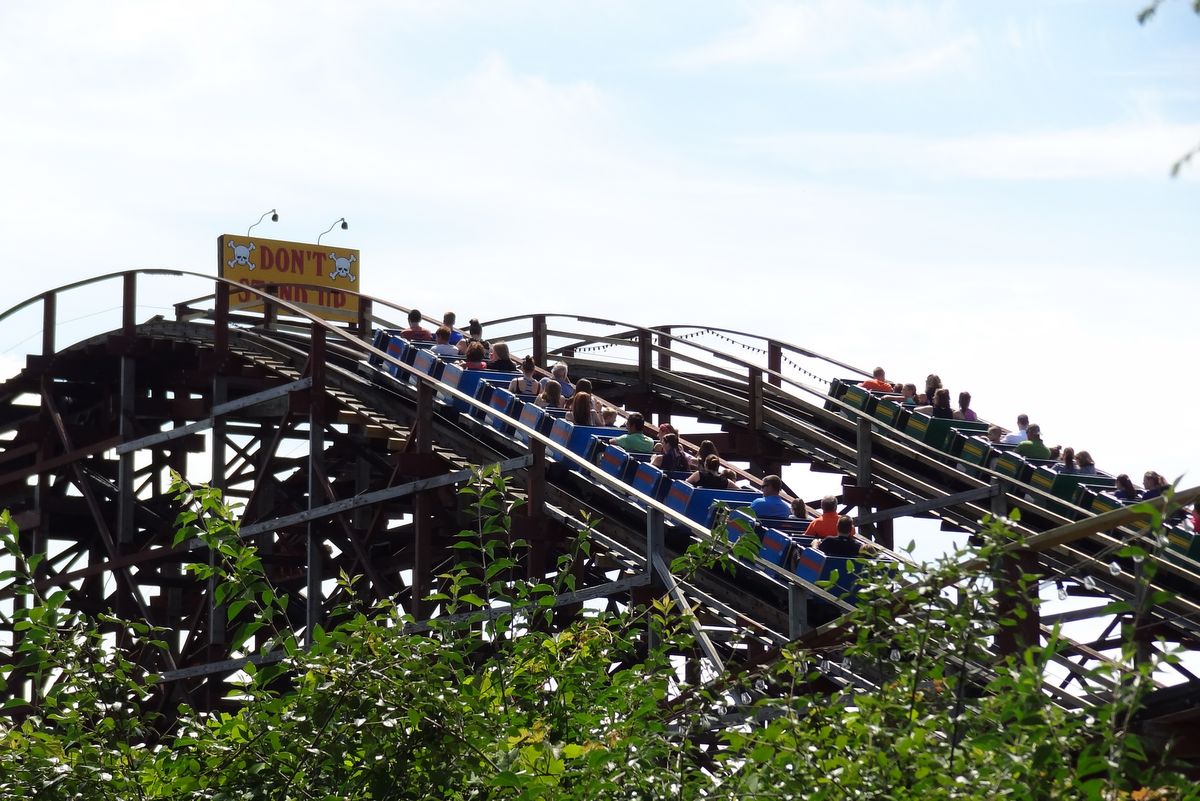
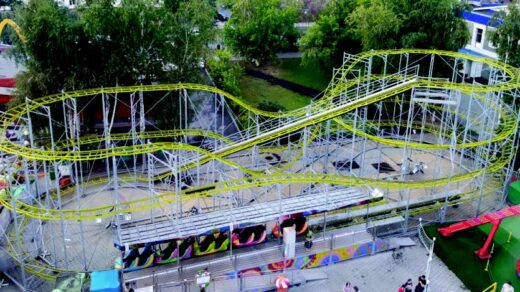
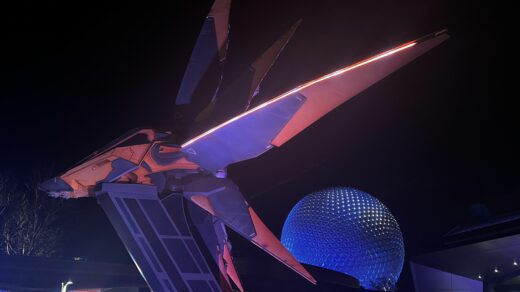




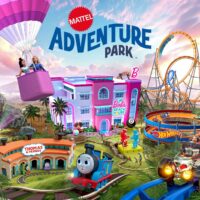





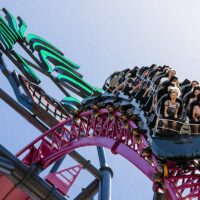
There’s a reason I named Sky Rocket as my most underrated ride in America! http://www.coaster101.com/2014/09/10/coaster101-coms-underrated-coasters/
If I recall, the last row of each car has even less leg room than the others:
http://www.coaster101.com/2010/06/29/sky-rocket-launches-at-kennywood/
Great write-up! I visited Kennywood last month with my daughters (10 & 13). We got six rides in on PR and absolutely loved it. What a great coaster!!! The way it interacts with the terrain is fabulous! We actually enjoyed the front row over the back row, but they were both great rides. I could have ridden PR all day! Sky Rocket was a smooth, fun ride. Thunderbolt…yeah…we bruised our internal organs on that one! All-in-all, a great little park!
I still have yet to go to Kennywood.So far, I have only been to SIz Flags Great America and Little Amerika.I may be going to Universal Studios,Seaworld Orlando,Busch Gardens,Six Flags Great Adventure,Six Flags Magic Mountain, and Six Flags Discovery Kingdom this summer.